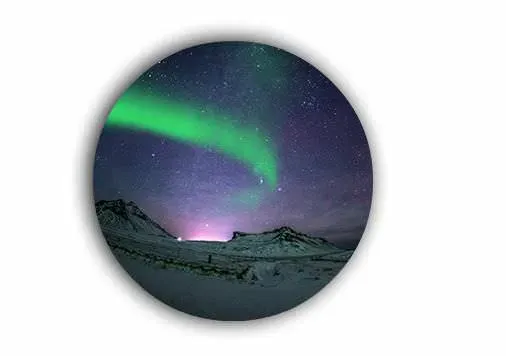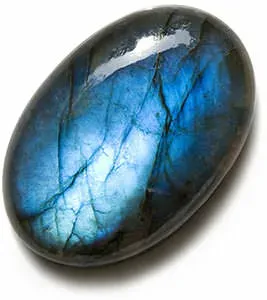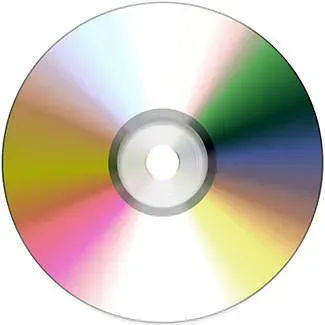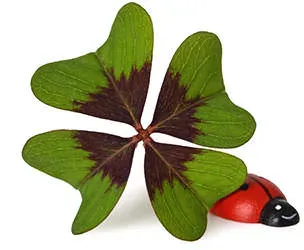 Labradorite was named after Labradore, Newfoundland, northeast Canada, where geologists first identified the gem in the 1770's. Legend has it that the Northern Lights were once stuck inside rocks on the Canadian coast until a brave warrior freed most of them by hitting the rocks with a spear. The rocks that were not hit, still have those Northern Lights within them, the cause of the beautiful iridescent quality labradorite possesses. Today, the most highly prized variety of labradorite still comes from Labradore, however some extremely valuable specimen also come from Finland, where labradorite is known as spectrolite. Spectrolite and labradorite are also sometimes known as moonstone, however experts are still not in agreement as to whether or not the stones are actually the same.
Labradorite was named after Labradore, Newfoundland, northeast Canada, where geologists first identified the gem in the 1770's. Legend has it that the Northern Lights were once stuck inside rocks on the Canadian coast until a brave warrior freed most of them by hitting the rocks with a spear. The rocks that were not hit, still have those Northern Lights within them, the cause of the beautiful iridescent quality labradorite possesses. Today, the most highly prized variety of labradorite still comes from Labradore, however some extremely valuable specimen also come from Finland, where labradorite is known as spectrolite. Spectrolite and labradorite are also sometimes known as moonstone, however experts are still not in agreement as to whether or not the stones are actually the same.
 Labradorite was extremely popular for jewelry in France and England in the 18th century. It was also used as an ornamental material for engraving and carving. Labradorite is a sodium rich plagioclase feldspar, which is not imitated or produced synthetically. The stone is very difficult to cut, so it is not often seen, even though it is abundant. It requires a special skill that most cutters do not have, to bring out its characteristic colors. Because of this difficulty in cutting the stone, its value is quite low. Labradorite is best cut as a low cabochon. It is usually found as a compact mass in igneous and metamorphic rocks and is rarely found as crystals. Iridescent labradorite is mainly found in ancient crystalline rocks that formed deep in the crust. The most highly prized labradorite is found in Finland and Canada. Labradorite can also be found however, in various locations around Australia, Costa Rica, Germany, Madagascar, Mexico, Norway, Russia, and the United States.
Labradorite was extremely popular for jewelry in France and England in the 18th century. It was also used as an ornamental material for engraving and carving. Labradorite is a sodium rich plagioclase feldspar, which is not imitated or produced synthetically. The stone is very difficult to cut, so it is not often seen, even though it is abundant. It requires a special skill that most cutters do not have, to bring out its characteristic colors. Because of this difficulty in cutting the stone, its value is quite low. Labradorite is best cut as a low cabochon. It is usually found as a compact mass in igneous and metamorphic rocks and is rarely found as crystals. Iridescent labradorite is mainly found in ancient crystalline rocks that formed deep in the crust. The most highly prized labradorite is found in Finland and Canada. Labradorite can also be found however, in various locations around Australia, Costa Rica, Germany, Madagascar, Mexico, Norway, Russia, and the United States.
 Labradorite has a vitreous luster, and rates a 6 to 6.5 on the hardness scale. It is rarely mistaken for other gems, as its sheen is so unique. This sheen, or bright iridescence, is caused by the scattering or reflecting of light. When light is scattered or reflected by tiny intergrowths and suffers interference, this sheen is born, which is known as schiller. This gorgeous eye catching effect can be orange, green, yellow, violet, blue, or all of these colors at once. When all of these colors are displayed at once, the phenomenon is known as laboradorescence. When laboradrites are found, some may display a hint of this visual phenomenon, however most must be polished, to bring the full effect of this display out. Sometimes, stones with laboradorescence are called rainbow moonstone. There is also a new variation of the stone seen on the market more often these days. It is a shimmering red to orange variety of labradorite from Oregon called sun stone.
Labradorite has a vitreous luster, and rates a 6 to 6.5 on the hardness scale. It is rarely mistaken for other gems, as its sheen is so unique. This sheen, or bright iridescence, is caused by the scattering or reflecting of light. When light is scattered or reflected by tiny intergrowths and suffers interference, this sheen is born, which is known as schiller. This gorgeous eye catching effect can be orange, green, yellow, violet, blue, or all of these colors at once. When all of these colors are displayed at once, the phenomenon is known as laboradorescence. When laboradrites are found, some may display a hint of this visual phenomenon, however most must be polished, to bring the full effect of this display out. Sometimes, stones with laboradorescence are called rainbow moonstone. There is also a new variation of the stone seen on the market more often these days. It is a shimmering red to orange variety of labradorite from Oregon called sun stone.
 Labradorite is a stone of overall good luck. It aids in concentration, clarity, courage, understanding one's life purpose and getting rid of negative energy and attachments. It heals alcoholism, codependency, confusion and indecision. It brings calm and balance, and brings comfort and relief to those who are overworked. It is also known to treat premenstrual syndrome.
Labradorite is a stone of overall good luck. It aids in concentration, clarity, courage, understanding one's life purpose and getting rid of negative energy and attachments. It heals alcoholism, codependency, confusion and indecision. It brings calm and balance, and brings comfort and relief to those who are overworked. It is also known to treat premenstrual syndrome.